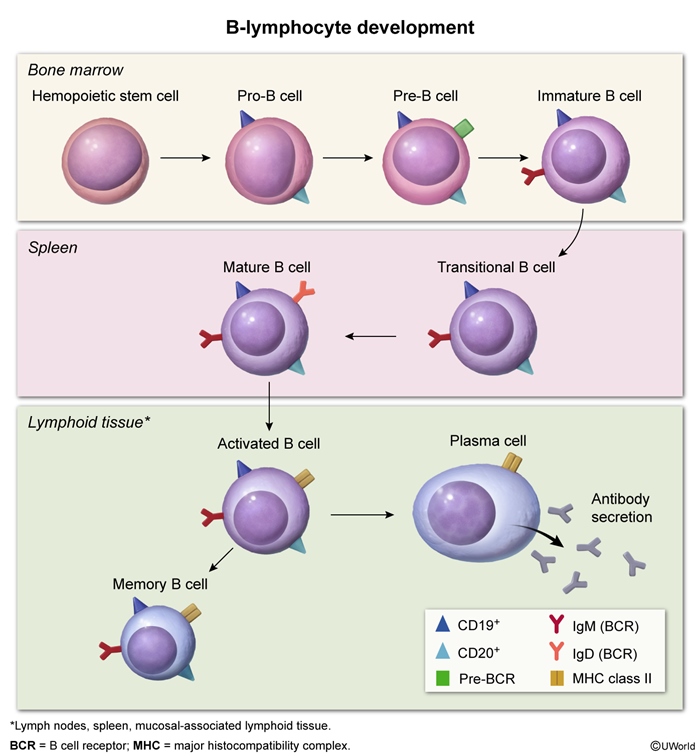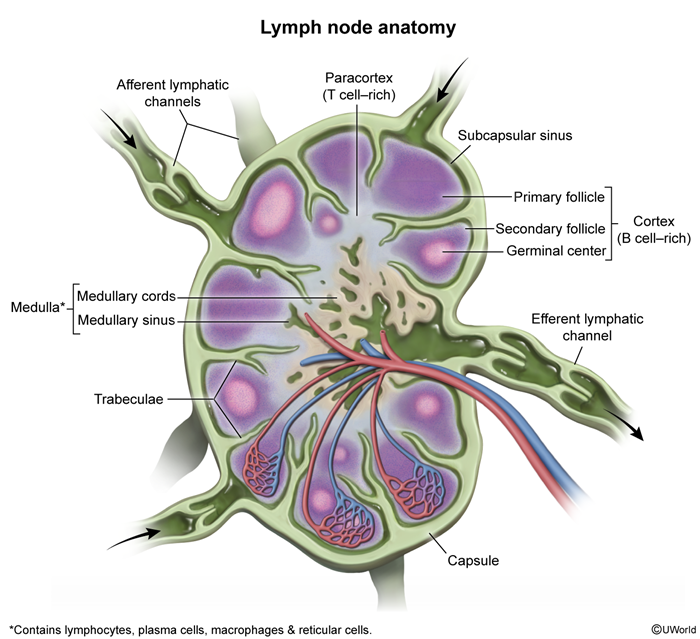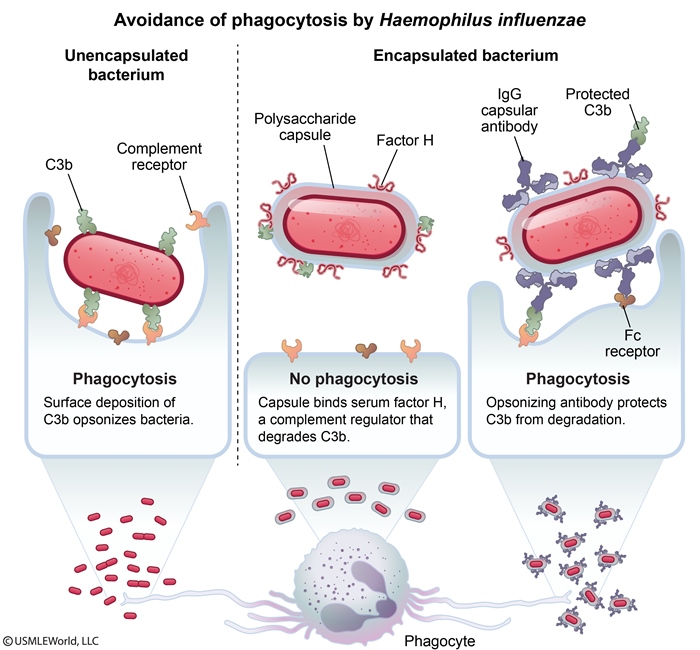X-Linked (Bruton) Agammaglobulinemia
Article Sections
Introduction
X-linked (Bruton) agammaglobulinemia (XLA) is a primary immunodeficiency disorder characterized by the absence of mature B cells. Patients with XLA present with recurrent infections as transplacental immunoglobulin G (IgG) antibodies wane after age 6 months.
Pathogenesis
B cell maturation begins in the bone marrow, where hematopoietic stem cells differentiate into immature B cells (Figure 1). Immature B cells then migrate to secondary lymphoid tissues (eg, spleen, lymph nodes), where they complete maturation. Mature B cells aggregate in the cortex of lymph nodes to form lymphoid follicles (Figure 2). Upon antigenic stimulation, mature B cells migrate to secondary follicles, where they proliferate and differentiate into immunoglobulin-producing plasma cells in the germinal center.
XLA is caused by a genetic mutation in the Bruton tyrosine kinase (
Continue Learning with UWorld
Get the full X-Linked (Bruton) Agammaglobulinemia article plus rich visuals, real-world cases, and in-depth insights from medical experts, all available through the UWorld Medical Library.
Figures


